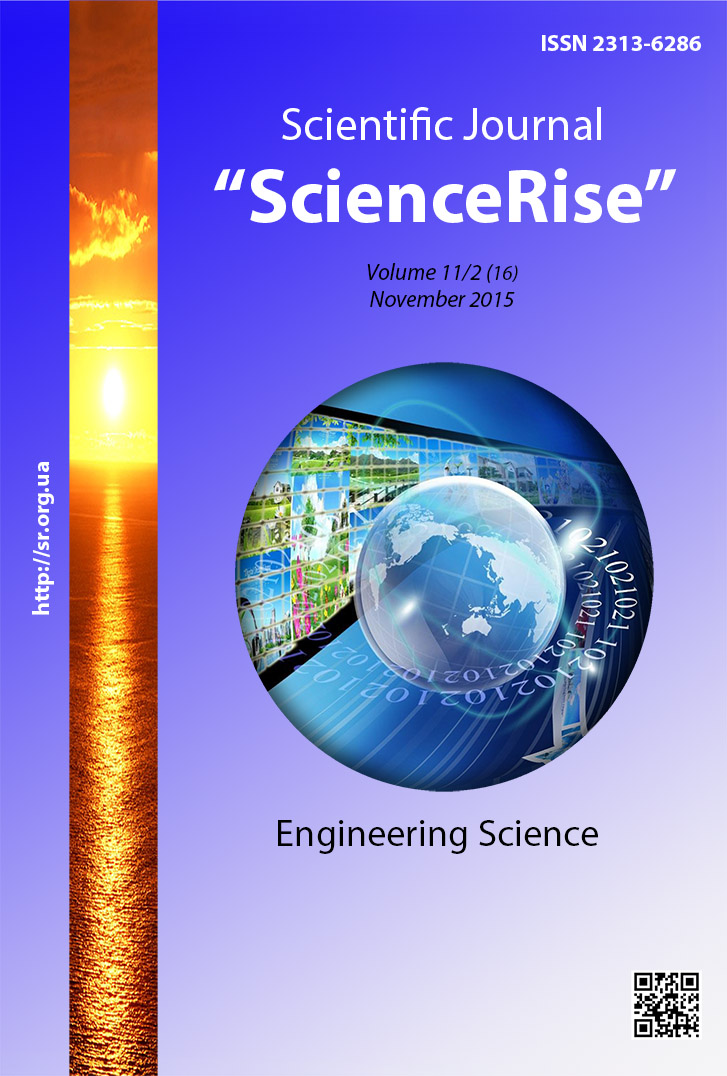Sorption properties of finely dispersed metal-containing polymer-silicate materials
DOI:
https://doi.org/10.15587/2313-8416.2015.53489Keywords:
polymer-silicate filler, modifier, polyvinylpyrrolidone, polyvinyl alcohol, sorption, indicators, moisture absorption, polyester resinAbstract
Sorption properties of metal-containing polymer-silicate materials on regarding to different acid-base indicators have been investigated. The effect of the nature of metal and polymer modifier (polyvinyl alcohol and polyvinylpyrrolidone) on the amount of active centers and specific active surface area of such material was determined. Moisture absorption of modified and not modified silicate fillers was founded. The effect of Ni-containing polymer-silicate fillers on the speed of curing of polyester compositions was determined
References
Chvalun, S. N., Novokshonova, L. A., Korobko, A. P., Brevnov, P. N. (2008). Polimer-silikatnye nanokompozity: fiziko-himicheskie aspekty sinteza polimerizaciej in situ. Rossijskij himicheskij zhurnal zhurnal rossijskogo himicheskogo obshhestva im. D. I. Mendeleeva, LII (5), 52–57.
García M. (2004). Polymer – inorganic nanocomposites, influence of colloidal silica. Netherlands, 188. http://doc.utwente.nl/41477/1/thesis_Garcia-Curiel.pdf
Voronin, E. F., Nosach, L. V., Pahlov, E. M. (2007). Peculiarities of adsorption interactions on the surface of the aggregate nanosilica. Physical chemistry of nanomaterials and supramolecular structures, 1, 264–285.
Billingham, J., Breen, C., Yarwood, J. (1997). Adsorption of polyamine, polyacrylic acid and polyethylene glycol on montmorillonite: An in situ study using ATR-FTIR. Vibrational Spectroscopy, 14 (1), 19–34. doi: 10.1016/s0924-2031(96)00074-4
Ray, S. S., Okamoto, M. (2003). Polymer/layered silicate nanocomposites: a review from preparation to processing. Progress in Polymer Science, 28 (11), 1539–1641. doi: 10.1016/j.progpolymsci.2003.08.002
Gancho, A. V., Levytskyi, V. Ye., Suberliak, O. V. (2010). Physico-chemical regularities of formation of polyvinyl-silicate nanocomposite materials. Questions of chemistry and chemical engineering, 6, 55–59.
Masyuk, A. S., Levytskyi, V. Ye. (2014). Regularities of obtaining of polymer-silicate composites from water-soluble silicates and polymers. Eastern-European Journal of Enterprise Technologies, 6/6 (72), 29–33. doi: 10.15587/1729-4061.2014.30870
Bishop, E. (1976). Indicators. Moskow: «Myr», 496.
Downloads
Published
Issue
Section
License
Copyright (c) 2015 Андрій Сергійович Масюк, Діана Сергіївна Катрук, Володимир Євстахович Левицький

This work is licensed under a Creative Commons Attribution 4.0 International License.
Our journal abides by the Creative Commons CC BY copyright rights and permissions for open access journals.
Authors, who are published in this journal, agree to the following conditions:
1. The authors reserve the right to authorship of the work and pass the first publication right of this work to the journal under the terms of a Creative Commons CC BY, which allows others to freely distribute the published research with the obligatory reference to the authors of the original work and the first publication of the work in this journal.
2. The authors have the right to conclude separate supplement agreements that relate to non-exclusive work distribution in the form in which it has been published by the journal (for example, to upload the work to the online storage of the journal or publish it as part of a monograph), provided that the reference to the first publication of the work in this journal is included.

